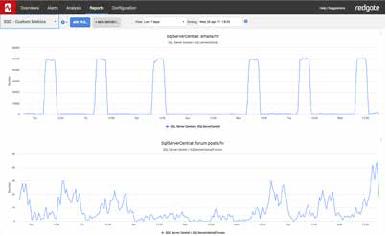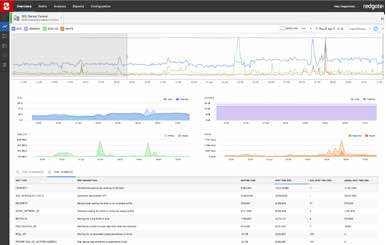Metrics install automatically if you have Redgate Monitor installed.
If you are using Redgate’s SQL Server monitoring tool, Redgate Monitor, you can instantly install and run this metric on your servers.
This metric measures the total number of indexes per database, where the number of writes exceed the number of reads. It provides a general indicator of possible performance factors affecting queries in your database.
If indexes are being updated with new data more often than they are being used in query plans, they can cause performance issues during write-heavy operations (INSERT, UPDATE, and DELETE statements), while adding little or no benefit to read operations.
For more information, see General Index Design Guidelines.
Metric definition
Name
Indexes with excessive writes
Description
This metric measures the total number of indexes per database, where the number of writes exceed the number of reads. It provides a general indicator of possible performance factors affecting queries in your database.
If indexes are being updated with new data more often than they are being used in query plans, they can cause performance issues during write-heavy operations (INSERT, UPDATE, and DELETE statements), while adding little or no benefit to read operations.
Guideline values: The ideal value for this metric should be 0, but not every bad index should be dropped. There may be some indexes which are used for occasional (but important) queries. This metric should be used to provide insight into the overall indexing strategy.
Possible solutions: If this value indicates the need for further investigation, the following query can help identify indexes that may be candidates for adjustment or elimination:
SELECT OBJECT_NAME(s.object_id), i.name, i.type_desc FROM sys.dm_db_index_usage_stats s WITH ( NOLOCK ) JOIN sys.indexes i WITH (NOLOCK) ON s.index_id = i.index_id AND s.object_id = i.object_id WHERE OBJECTPROPERTY(s.[object_id], 'IsUserTable') = 1 AND s.database_id = DB_ID() AND s.user_updates > ( s.user_seeks + s.user_scans + s.user_lookups ) AND s.index_id > 1
More information:
General Index Design GuidelinesThe T-SQL query that will collect data
Instances to collect from
Select all
Databases to collect from
0
Collection frequency
60
Use collected or calculated values
Leave the Use a calculated rate of change between collections check box unchecked
Metric collection
Enabled
Alert definition
Alert name
High Write Indexes > 0
Description
SELECT OBJECT_NAME(s.object_id), i.name, i.type_desc FROM sys.dm_db_index_usage_stats s WITH ( NOLOCK ) JOIN sys.indexes i WITH (NOLOCK) ON s.index_id = i.index_id AND s.object_id = i.object_id WHERE OBJECTPROPERTY(s.[object_id], 'IsUserTable') = 1 AND s.database_id = DB_ID() AND s.user_updates > ( s.user_seeks + s.user_scans + s.user_lookups ) AND s.index_id > 1
More information:
General Index Design GuidelinesRaise an alert when the metric value goes
Above the defined threshholds
Default threshold values
| High: | |
| Medium: | 5 |
| Low: | 1 |
Raise an alert when the threshold is passed for
1 collection
Alert is
Enabled
 19,093
19,093 
